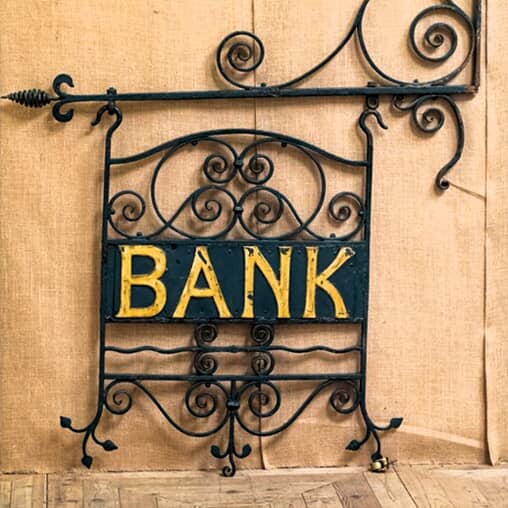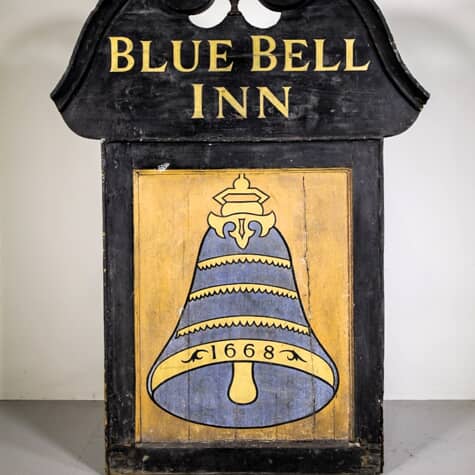Signage has always played a vital role in both commerce and the community. From the first humble hand-painted signs to the dazzling digital displays of today, it's a fascinating journey that reflects advances in technology, the tastes of different eras, and tells us much about the changing fabric of society.
Here is a short historical tour of how British signage has developed through the ages, highlighting key milestones and their relevance to your modern signage needs.

The Early Days: Signs Rooted in Craft (The Mediaeval Period to the 18th Century)
Go back to a time before mass production and every sign was a unique piece of art. Mediaeval Britain saw the rise of the "alehouse sign," hand-carved wooden displays depicting the establishment's name or a symbolic image.
Blacksmiths displayed horseshoes, bakers hung loaves of bread and inns used animals or heraldic crests. But these signs weren't just decorative, they met the needs of a largely illiterate population when the only option was to communicate information about your business visually.
The Age of Enlightenment: Signs Get Fancy (18th and 19th Centuries)
It was the 18th century that ushered in the era of the Enlightenment in which literacy and the arts slowly started to reach a larger audience. Signs became more elaborate, featuring detailed lettering, painted flourishes and even life-sized figures. The Industrial Revolution then fuelled innovation in signage even further.
Wrought iron signage, with its elegant curves and intricate designs, became popular. Think of the intricate iron signs still adorning some of Britain's oldest establishments such as banks, hotels and inns dating from this period – a testament to Georgian and Victorian craftsmanship.
The Rise of Standardisation: Mass Production Takes Hold (19th and 20th Centuries)
The 19th century saw the dawn of mass production, impacting signage significantly. Standardisation allowed for quicker and cheaper sign creation.
Enamel signs, with their glossy finish and vibrant colours, became a popular choice. Think of the iconic red London Underground signage designed by Edward Johnston in 1916.
This era also saw the introduction of neon signs, adding a touch of futuristic glamour to the cityscape, especially in major cities such as London, Paris and New York.

A World of Information: Signage Gets Informative and Diverse (20th and 21st Centuries)
The 20th century witnessed a boom in information dissemination. Road signs became standardised across the UK, promoting safety and easier driving. Illuminated signs with changeable messages emerged, allowing for more dynamic communication. The latter half of the century saw the rise of plastic and vinyl, offering new possibilities for lightweight and affordable signs.
The Digital Age: A New Era of Signage Dawns (21st Century)
Today, we stand in the age of the digital revolution. LED signs offer energy efficiency and stunning visuals, while interactive displays blur the lines between signage and technology. From dynamic wayfinding systems in shopping centres to digital menu boards in restaurants, the possibilities are endless.
Lessons Learned: How History Informs Modern Signage
This quick tour through history highlights a few themes that have always remained important for signage and hold valuable lessons for modern businesses. Here are what we think are the most important ones:
Craft Matters: While modern technology allows for mass production, don't underestimate the power of individually-crafted bespoke signage. It can add a touch of personality and exclusivity to your brand.
Clarity is Key: From the simple symbols of the mediaeval era to the clean lines of modern design, effective signage has always prioritized clear communication. Ensure your message is concise and easy to grasp.
Embrace Innovation: The signage landscape is constantly evolving. Consider incorporating new technologies like digital displays or LED lighting to enhance your message and stand out from the competition.
Context is King: Just like the early signs evolved to meet the needs of their time, choose signage that fits your brand image and complements your location. A high-tech digital display might not be suitable for a traditional pub, but a well-crafted wooden sign could be perfect.
Beyond the Past: A Glimpse into the Future of Signage
The future of signage promises even more exciting developments. Imagine interactive displays that respond to customer preferences, or self-illuminating signs that adapt to changing weather conditions. Sustainability will also play a key role. Look for advancements in recyclable materials and energy-efficient lighting solutions.
As technology continues to evolve, one thing remains constant: the power of signage to communicate, inform and shape our environment. By understanding the rich history of signage and embracing innovation, you can ensure your business has the right sign to stand out in a crowded marketplace.
At FASTSIGNS Manchester we have our finger on the pulse of the signage world and will be able to help you choose a sign design that doesn’t just look good today but will represent your business brilliantly for years to come!
